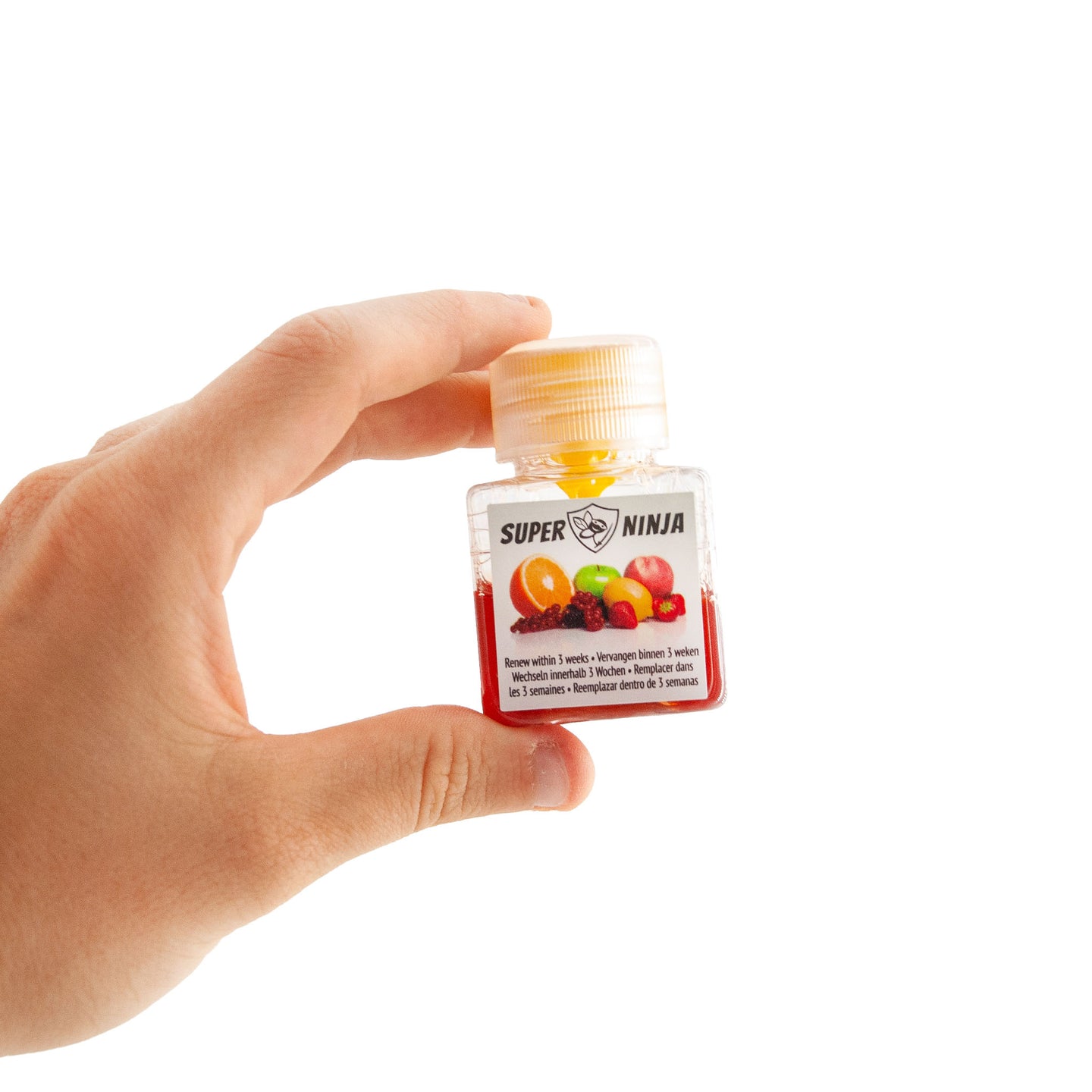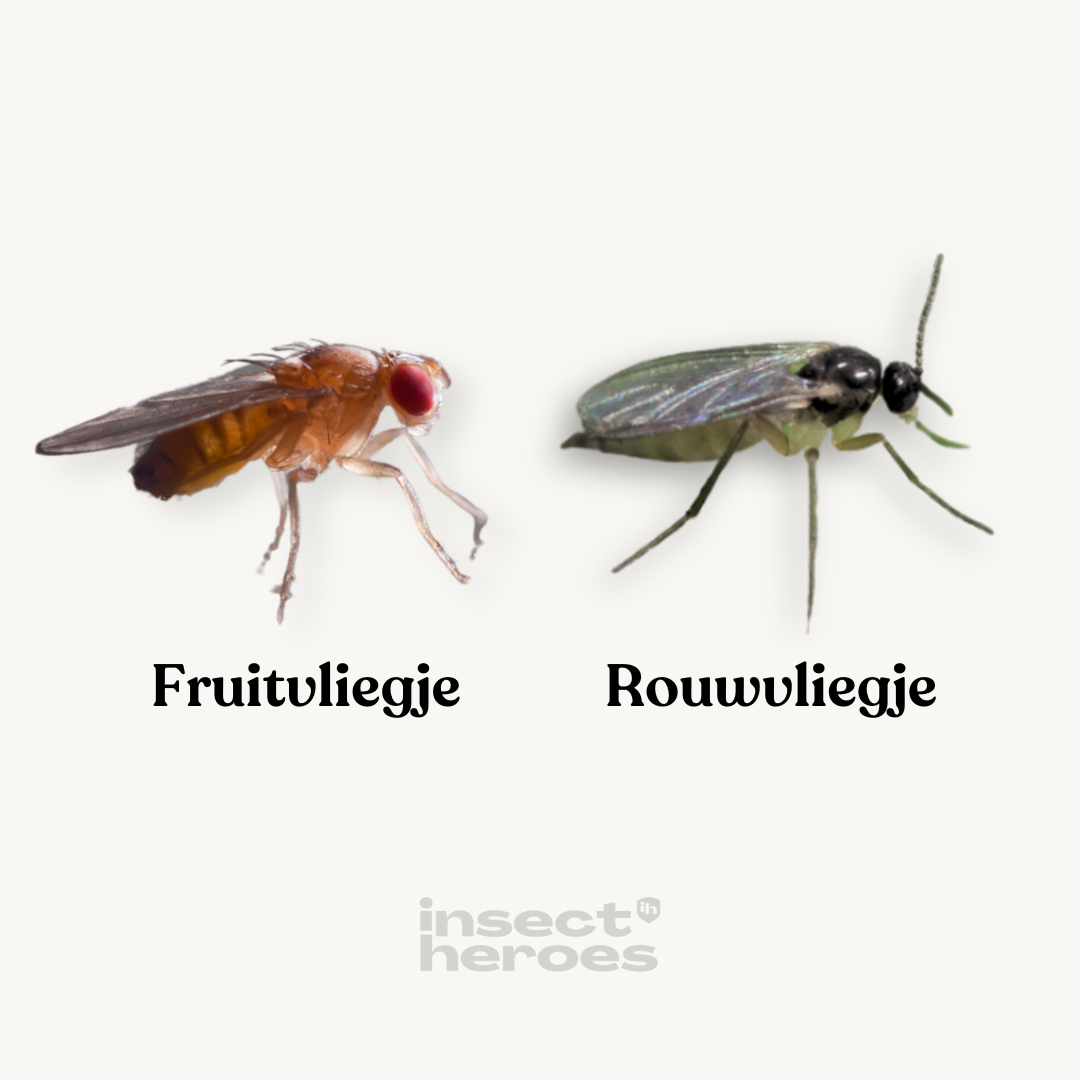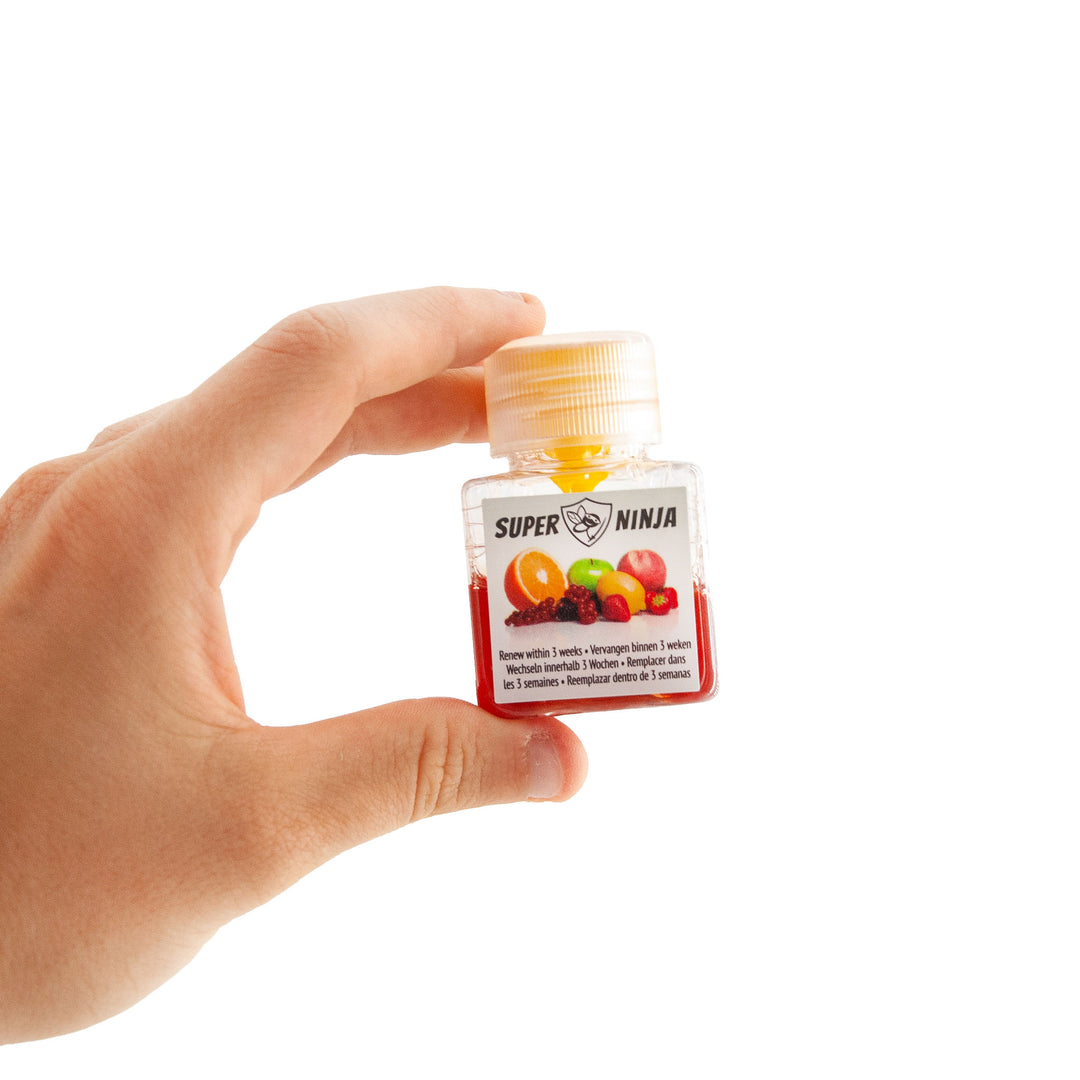Catching, controlling and preventing fruit flies
Fruitvliegjes herkennen
Verschil rouwvliegje en fruitvliegje
Hoe zie je het verschil tussen rouwvliegjes en fruitvliegjes in huis? Rouwvliegjes zijn kleine, zwarte vliegen die vaak bij potgrond van kamerplanten voorkomen. Ze leggen hun eitjes in vochtige aarde en hun larven voeden zich met organisch materiaal en wortels. Fruitvliegjes zijn kleiner en lichter van kleur, meestal bruin of geel. Ze worden aangetrokken door rijp of rottend fruit en leggen hun eitjes op de oppervlakte van deze voedingsbronnen.
Tips tegen fruitvliegjes
Met deze 5 tips kan je eenvoudig fruitvliegjes voorkomen.
Houd fruit en groenten gekoeld
Fruitvliegjes leggen hun eitjes op rijp of rottend fruit. Door fruit in de koelkast te bewaren, maak je het minder toegankelijk voor fruitvliegjes en vertraag je het rijpingsproces.
Sluit voedingsmiddelen goed af
Bewaar voedsel in goed afgesloten containers of zakken. Fruitvliegjes kunnen door kleine openingen kruipen, dus zorg ervoor dat alles goed afgesloten is.
Leeg de afvalbak regelmatig
Zorg ervoor dat je afvalbakken goed zijn afgesloten en regelmatig worden geleegd. Fruitvliegjes leggen vaak hun eitjes in voedselafval, dus een schone en afgesloten afvalbak helpt hun populatie te verminderen.
Spoel je afvoer door
Fruitvliegjes kunnen zich ook voortplanten in de afvoeren van je gootsteen. Giet regelmatig kokend water of een mengsel van baking soda en azijn in de afvoer om resten te verwijderen en de vliegen weg te houden.
Gebruik een fruitvliegjesval
Koop een fruitvliegjesval of maak er eenvoudig een met de tips hieronder.
Fruitvliegjes ontwikkeling
De levenscyclus van fruitvliegjes (Drosophila melanogaster) is relatief kort en bestaat uit vier stadia: ei, larve, pop en volwassen vlieg. Hieronder volgt een gedetailleerde beschrijving van elk stadium:
Ei
De levenscyclus begint wanneer een volwassen vrouwtjesfruitvlieg haar eitjes legt op een voedselbron, meestal rottend fruit of ander organisch materiaal. Een vrouwtje kan in haar leven honderden eitjes leggen. Deze eitjes zijn zeer klein, ongeveer 0,5 millimeter lang, en komen binnen 24 tot 30 uur uit.
Larve
Uit de eitjes kruipen kleine, wormachtige larven die zich voeden met het fermenterende fruit of ander organisch materiaal. Dit stadium duurt ongeveer vijf tot zes dagen.
Pop
De larven verpoppen zich in vijf dagen tot volwassen fruitvliegje.
Volwassen vlieg
Uit de pop kruipt een volwassen fruitvlieg. Volwassen fruitvliegen zijn geslachtsrijp binnen 24 tot 48 uur na het uitkomen en beginnen vrijwel direct met voortplanten. Een volwassen fruitvlieg leeft meestal één tot twee weken, hoewel sommige omstandigheden hun levensduur kunnen verlengen tot maximaal een maand.
De snelle voortplantingscyclus van fruitvliegjes maakt het mogelijk voor hun populatie om snel te groeien, vooral in een gunstige omgeving met voldoende voedselbronnen. Dit is de reden waarom het een plaag kan worden in keukens en andere plaatsen waar voedsel bewaard wordt.
Fruitvliegjesval maken
Stap 1
Neem een plastic of glazen bakje, het liefst met een deksel. Giet een laagje appelciderazijn in het bakje en voeg een druppeltje afwasmiddel toe.
Stap 2
Pons drie kleine gaatjes in de deksel, bijvoorbeeld met een spijker en hamer. Heb je geen deksel? Gebruik dan plasticfolie en prik er een klein gaatje in met een naald of satéprikker. Zorg dat het gaatje klein is, zodat de fruitvliegjes erdoor kunnen kruipen maar de weg naar buiten niet meer vinden.
Stap 3
Plaats het bakje waar de vliegjes veel voorkomen. Je bent klaar om fruitvliegjes te vangen!
Na gebruik kun je de inhoud eenvoudig door de gootsteen spoelen.
Fruitvliegjes chemisch bestrijden
Het is gelukkig niet nodig om fruitvliegjes chemisch te bestrijden als je de juiste tips en hulpmiddelen gebruikt. Dit is vooral belangrijk voor je eigen gezondheid en die van je huisdieren. Fruitvliegjes bevinden zich vaak rondom voedsel of etensresten, vooral in de keuken, waar je zeker geen gif wilt gebruiken. Met eenvoudige maatregelen zoals het verwijderen van overrijp fruit, het schoonhouden van de keuken en het plaatsen van vallen kun je fruitvliegjes effectief bestrijden zonder schadelijke chemicaliën.
Weet je niet zeker van welke plaag je last hebt?
Bekijk de overzichtspagina met alle plagen.












































